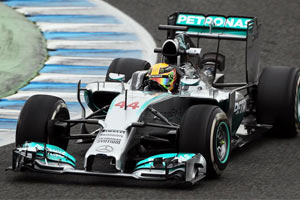Sauber released those pictures a couple of years ago. I used them to somewhat show the general flow characteristics of a car in yaw so you could see how flow changes over the front wing. If you look at the rear of the car in the second picture, you can tell they actually come from a steady-state simulation of diagonal air flow. I don't think any team would release anything more specific than that, though, because it would give away too much.YUL-F1 wrote:The CFD pics are great and very informative but I can't help but wonder why they don't have the tyres pointing at the correct angle for the rate of turn being simulated given their goal of doing such an exercise. What about tyre deformation?
Even though the right side of the wing gets more downforce, it's transmitted through the wing pylons to the nose/chassis of the car, and I'm afraid a more positive front-end in general is about as good as it gets. For now. Who knows what they'll do next?timbo wrote:I have problems with this statement. I'd rather help unloaded wheel (inside = left). Maybe I'm not getting something.bhallg2k wrote:The car is in a simulated left turn. Note how the pressure drops on the right side of the front wing throughout the turn. That's right where you need it.
http://i.imgur.com/CVCP7hH.png
Not at all. Just sharing what I've picked up around here over the years.turbof1 wrote:A very nice insight into this (clearly I must have raddled the cages for you with that post in the voting system topic)!
[...]
And everything you mentioned is why this is difficult to do. Ferrari, for one, has yet to make it work. The job was made even more difficult this year with the introduction of narrowed wings.
I think this all came out of research and development into outwash wings starting in 2009, of which Brawn GP, now Mercedes AMG Petronas, was a leading innovator. (While debatable, I actually believe the BGP 001's front wing was probably more instrumental to the car's success than was its double-diffuser.)





